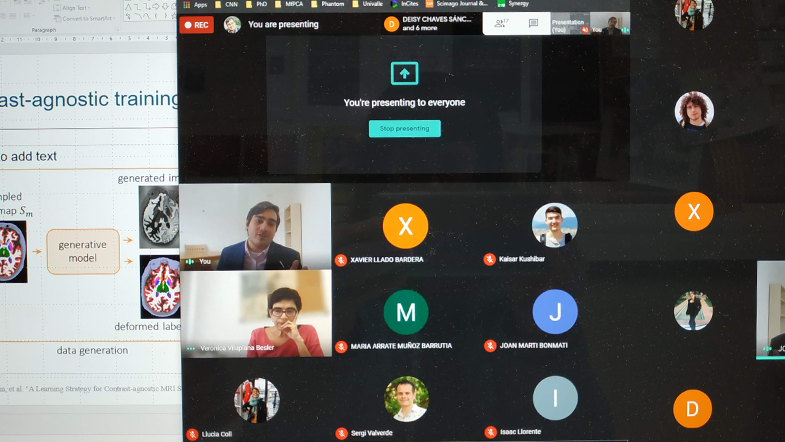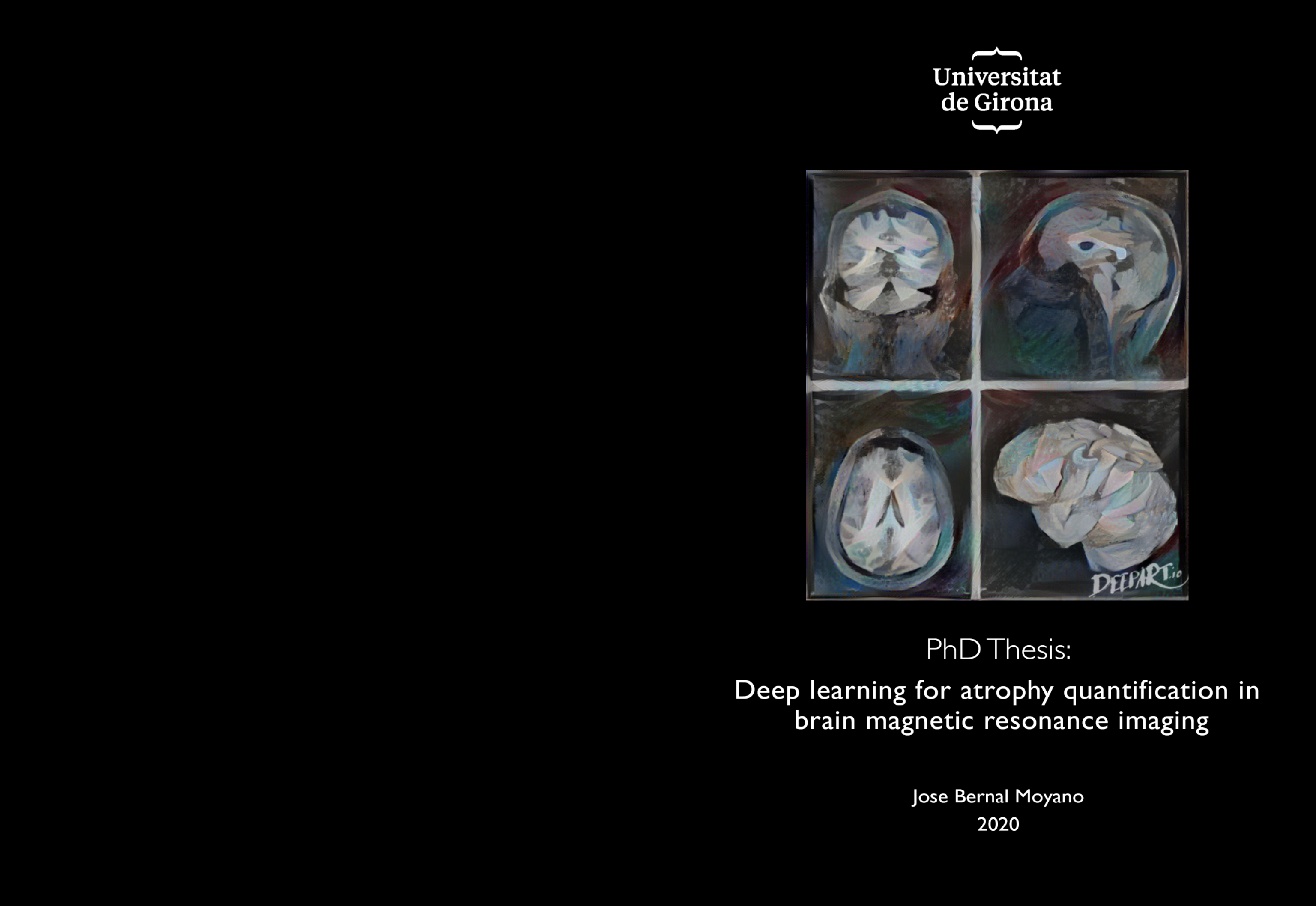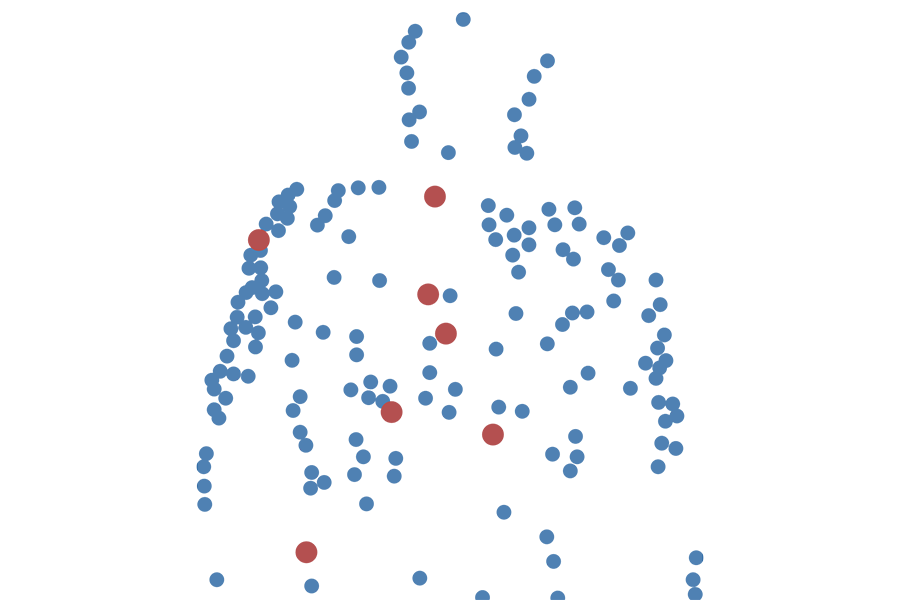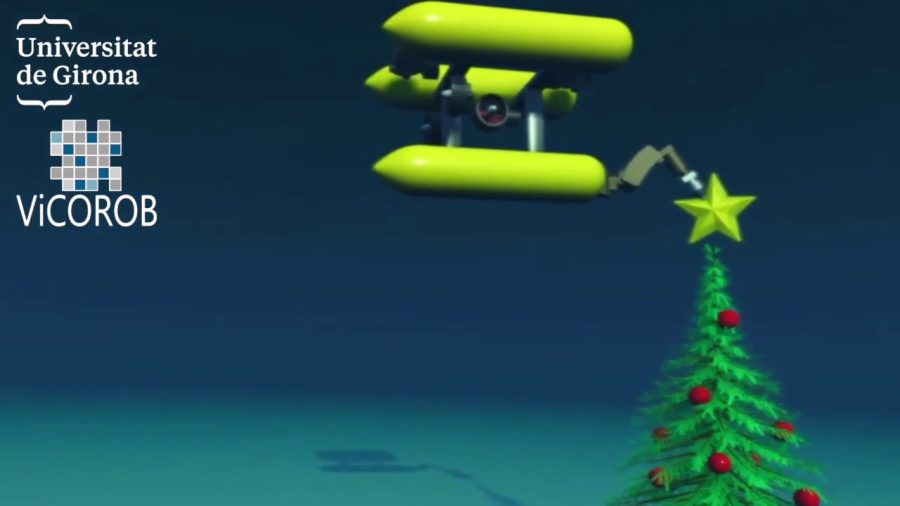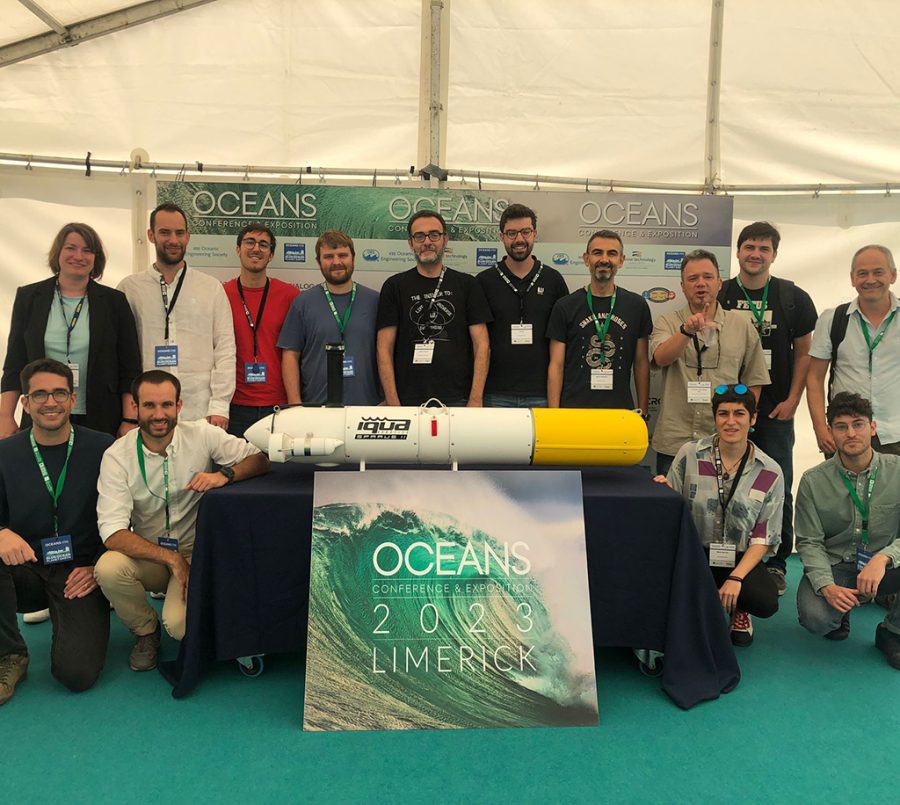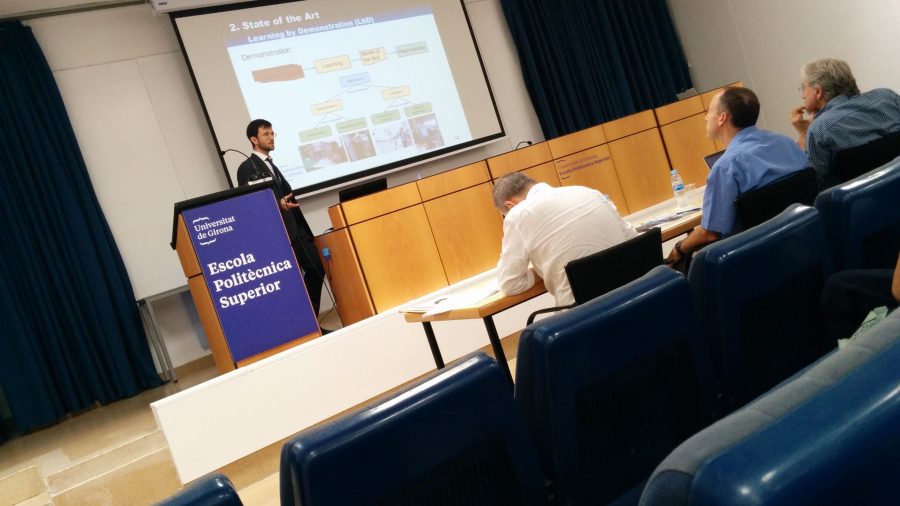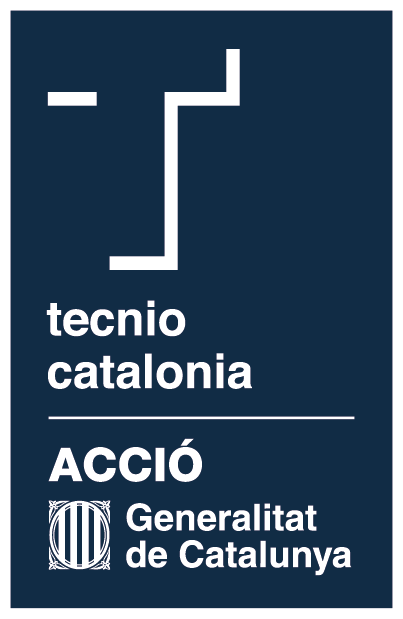By Jose Bernal Moyano
Supervised by Dr. Arnau Oliver / Dr. Xavier Lladó
Abstract
Cerebral atrophy is a neuroimaging feature of ageing and diverse brain pathologies that indicate of loss of neurons and their connections. Its quantification plays a fundamental role in neuroinformatics since it permits studying brain development, diagnosing brain diseases, assessing their progression, and determining the effective- ness of novel treatments to counteract these brain diseases. However, this is still an open and challenging problem in medical image analysis.
In this doctoral thesis, we question whether deep learning methods can be used for better estimating cerebral atrophy from magnetic resonance images at both cross- sectional and longitudinal levels. To fulfil this goal, we initially reviewed the liter- ature on deep learning for brain medical image analysis to discover potential lines to explore. Our revision revealed that a direct comparison cannot be established between methods due to potential overfitting and there are no longitudinal atrophy quantification strategies using deep learning.
Overfitting to challenge data hinders comparing architectures. To overcome this issue, we built a framework for evaluating methods for brain tissue segmentation quantitatively using the same evaluation dataset, metrics, tasks, and pre- and post- processing. Our results suggest that deep learning can achieve state-of-the-art results in cross-sectional tissue segmentation and that certain design directives are experi- mentally better than others. Based on our analysis, we devised three proposals for three Challenges of the Conference in Medical Image Computing and Computer- Assisted Intervention between 2017 and 2019. In all three events, we achieved a compelling performance.
The lack of annotated longitudinal atrophy datasets prevents determining whether a certain method is accurate, and also training deep learning methods for detecting brain changes. To cope with this issue, we crafted a deep learning method for im- age synthesis allowing generating a plethora of scans for which the induced changes would be known. We provided our model with baseline scans and real follow-up segmentation maps and observed that our framework produced synthetically similar outputs, even when training and testing on different but harmonised domains. More- over, our proposal induced changes that were detected by validated cross-sectional and longitudinal methods.
Finally, we presented an application of our data generator for training a deep learning method for atrophy quantification with many more samples. Our lon- gitudinal atrophy quantification proposal involved data harmonisation, non-linear registration through deep learning, and estimation of brain edge displacement as a surrogate measure of brain atrophy through integrating the Jacobian of the re- sulting deformation fields. We tested our method on three cohorts of patients with Alzheimer’s disease, dementia, and multiple sclerosis and compared its performance against relevant methods. We trained our method on a single domain and tested it on the same and other two domains. Our proposal worked well in these datasets and was particularly suitable for discerning between multiple sclerosis patients and control subjects.
This PhD thesis forms part of multiple projects carried out by our research group. To enable reproducibility and work continuation, we have released our development to the public. We believe that the proposed cross-sectional and longitudinal methods can be beneficial for the research and clinical community.
